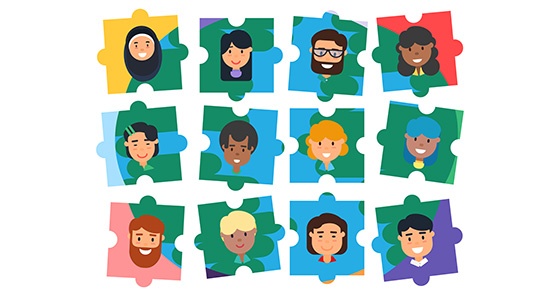
Many businesses are spending more time and resources on supporting the well-being of their employees. This includes recognizing and addressing issues related to diversity, equity and inclusion (DEI).
A thoughtfully designed DEI program can do more than just head off potential conflicts and disruptions among coworkers; it can help you attract good job candidates, retain your best employees and create a more engaged, productive workforce.
Strategic objectives
Essentially, DEI programs are formal efforts to help employees better understand, accept and appreciate differences among everyone on staff. Differences addressed typically include race, ethnicity, gender identification, age, religion, disabilities and sexual orientation. They may also include education, personality types, skill sets and life experiences. A program can comprise training courses, seminars, guest speakers, group discussions and social events.
Strategic objectives may vary depending on the business. Some companies wish to improve collaboration and productivity within or among teams, departments or business units. Others are looking to attract more diverse job candidates. And still others want to connect with growing multicultural markets that don’t necessarily respond to “traditional” messaging.
Think of implementing a DEI program as an investment. It should include specific goals and achievable, measurable returns.
Key components
Many DEI programs fail because of lack of consensus regarding their value or faulty design. Begin with executive buy-in. Successful programs start with the support of ownership and senior leadership. If they’re not committed to the program, it probably won’t last long (if it gets off the ground at all). Typically, a champion will need to build the case of why a DEI program is needed and explain how it will positively impact the organization.
You’ll also need to assemble the right team. Form a DEI committee to identify objectives and give the program its initial size and shape. If you happen to employ someone who has been involved in launching a DEI program in the past, learn all you can from that employee’s experience. Otherwise, encourage your team to research successful and unsuccessful programs. You might even engage a consultant who specializes in the field.
For clarity and consistency, put your DEI program in writing. The committee needs to develop clear language spelling out each goal. The objectives can then be reviewed, discussed and revised. Ensure the objectives support your strategic plan and that you can accurately measure progress toward each. Don’t launch the program until you’re confident it will improve your organization, not distract it.
How work is done
Events of the last year or so have led most businesses to reconsider the size, composition and operational approach of their workforces. In many industries, DEI awareness and training is playing an important role in this reckoning. We’d be happy to help you assess the costs and feasibility of a program for your business.
© 2021
